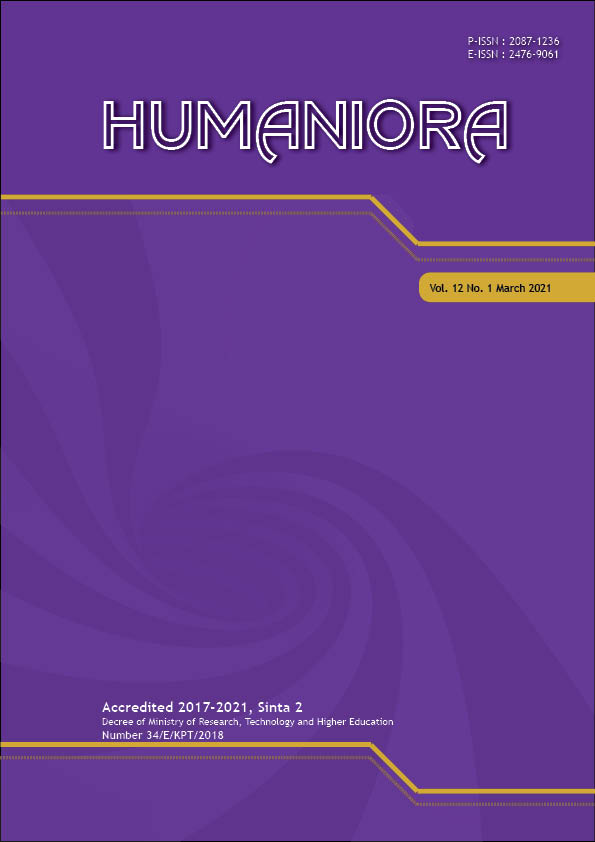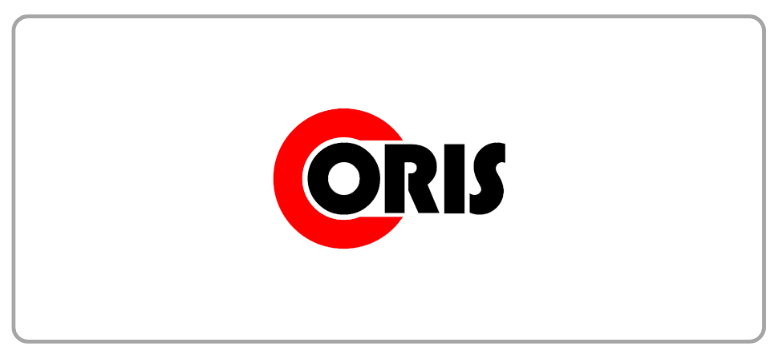The Adaptation of Indoor Health and Comfort Criteria to Mitigate Covid-19 Transmission in the Workplace
DOI:
https://doi.org/10.21512/humaniora.v12i1.6767Keywords:
indoor health, comfort criteria, Covid-19 mitigation, Covid-19 transmissionAbstract
The research discussed the application of indoor health and comfort criteria that needed to be reviewed to create good indoor environmental quality and reduce the transmission of the Covid-19 virus where people spent most of their time indoors. A confined area, which was poorly ventilated and reliant on air conditioning, helped transmit the Covid-19 virus easily as air recirculation was the main cause of office clusters. One of the categories of Greenship Interior Space, Indoor Health and Comfort (IHC), could be used as a guide for creating better indoor quality. The method used for the research was a systematic literature review to define, study, analyze, and classify all available research relating to adaptation of indoor health and comfort criteria to mitigate the transmission in the workplace. The results show the adjustment to IHC criteria in IHC 1-10, which focus on providing good air quality by introducing outside air, stopping air recirculation, reducing indoor user capacity, and reducing indoor biological and chemical pollutants. To illustrate the implementation of the new normal, Ciputra University workplace was being observed, as the findings of the results, some strategies that are in line with the objectives of IHC 1, IHC 2, and IHC 5. Adjustment of these criteria must be supported by implementing health protocols through basic hygiene routines, fitness screening, and maintaining physical distancing.
References
Brittain, O. S., Wood, H., & Kumar, P. (2020). Prioritising indoor air quality in building design can mitigate future airborne viral outbreaks. Cities & Health, 0(0), 1-4. https://doi.org/10.1080/23748834.2020.1786652.
Cook, T. M. (2020). Personal protective equipment during the COVID-19 pandemic: a reply. Anaesthesia, 75(8), 1121–1122. https://doi.org/10.1111/anae.15158.
Cummings, B. E., & Waring, M. S. (2020). Potted plants do not improve indoor air quality: a review and analysis of reported VOC removal efficiencies. Journal of Exposure Science & Environmental Epidemiology, 30(2), 253–261. https://doi.org/10.1038/s41370-019-0175-9.
Darus, F. M., Ahmed, A. Z., & Latif, M. T. (2011). Preliminary assessment of indoor air quality in terrace houses. Health and the Environment Journal, 2(2), 8-14.
Dhand, R., & Li, J. (2020). Coughs and Sneezes: Their Role in Transmission of Respiratory Viral Infections, Including SARS-CoV-2. American Journal of Respiratory and Critical Care Medicine, 202, 651–659. https://doi.org/10.1164/rccm.202004-1263pp.
Dietz, L., Horve, P. F., Coil, D. A., Fretz, M., Eisen, J. A., & Van Den Wymelenberg, K. (2020). 2019 novel coronavirus (COVID-19) pandemic: Built environment considerations to reduce transmission. MSystems, 5(2), 1-41. https://doi.org/10.1128/msystems.00245-20.
EPA (United States Environmental Protection Agency). (2009). A brief guide to mold, moisture, and your home. Retrieved from https://www.epa.gov/sites/production/files/2016-10/documents/moldguide12.pdf.
Fahimipour, A. K., Hartmann, E. M., Siemens, A., Kline, J., Levin, D. A., Wilson, H., Betancourt-Román, C. M., Brown, G., Fretz, M., Northcutt, D., Siemens, K. N., Huttenhower, C., Green, J. L., & Van Den Wymelenberg, K. (2018). Daylight exposure modulates bacterial communities associated with household dust 06 Biological Sciences 0605 Microbiology. Microbiome, 6(1), 1-13. https://doi.org/10.1186/s40168-018-0559-4.
Gormley, M., Aspray, T. J., & Kelly, D. A. (2020). COVID-19: mitigating transmission via wastewater plumbing systems. The Lancet Global Health, 8(5), e643. https://doi.org/10.1016/S2214-109X(20)30112-1
Kampf, G., Todt, D., Pfaender, S., & Steinmann, E. (2020). Persistence of coronaviruses on inanimate surfaces and their inactivation with biocidal agents. Journal of Hospital Infection, 104(3), 246–251. https://doi.org/10.1016/j.jhin.2020.01.022
Kazemi, F., Rabbani, M., & Jozay, M. (2020). Investigating the plant and air-quality performances of an internal green wall system under hydroponic conditions. Journal of Environmental Management, 275, 111230. https://doi.org/https://doi.org/10.1016/j.jenvman.2020.111230
Khanna, R., Cicinelli, M., Gilbert, S., Honavar, S., & Murthy, G. (2020). COVID-19 pandemic: Lessons learned and future directions. Indian Journal of Ophthalmology, 68(5), 703–710. https://doi.org/10.4103/ijo.IJO_843_20
Kumar, P., & Morawska, L. (2019). Could fighting airborne transmission be the next line of defence against COVID-19 spread? City and Environment Interactions, 4(2019), 100033. https://doi.org/10.1016/j.cacint.2020.100033
Lee, Y. S., & Guerin, D. A. (2010). Indoor environmental quality differences between office types in LEED-certified buildings in the US. Building and Environment, 45(5), 1104–1112. https://doi.org/https://doi.org/10.1016/j.buildenv.2009.10.019
Lim, Y.-W., Kandar, M. Z., Ahmad, M. H., Ossen, D. R., & Abdullah, A. M. (2012). Building façade design for daylighting quality in typical government office building. Building and Environment, 57, 194–204. https://doi.org/https://doi.org/10.1016/j.buildenv.2012.04.015
Marshall, D., Bois, F., Jensen, S. K. S., Linde, S. A., Higby, R., Remy-McCort, Y., Murray, S., Dieckelman, B., & Sudradjat, F. (2020). Sentinel Coronavirus Environmental Monitoring Can Contribute to Detecting Asymptomatic SARS-CoV-2 Virus Spreaders and Can Verify Effectiveness of Workplace COVID-19 Controls. MedRxiv, August, 2020.06.24.20131185. https://doi.org/10.1101/2020.06.24.20131185
Miller, S. L., Linnes, J., & Luongo, J. (2013). Ultraviolet germicidal irradiation: Future directions for air disinfection and building applications. Photochemistry and Photobiology, 89(4), 777-781. https://doi.org/10.1111/php.12080.
Morawska, L., Johnson, G. R., Ristovski, Z. D., Hargreaves, M., Mengersen, K., Corbett, S., Chao, C. Y. H., Li, Y., & Katoshevski, D. (2009). Size distribution and sites of origin of droplets expelled from the human respiratory tract during expiratory activities. Journal of Aerosol Science, 40(3), 256–269. https://doi.org/10.1016/j.jaerosci.2008.11.002
Morawska, Lidia, & Cao, J. (2020). Airborne transmission of SARS-CoV-2: The world should face the reality. Environment International, 139(April), 105730. https://doi.org/10.1016/j.envint.2020.105730
Morawska, Lidia, Tang, J. W., Bahnfleth, W., Bluyssen, P. M., Boerstra, A., Buonanno, G., Cao, J., Dancer, S., Floto, A., Franchimon, F., Haworth, C., Hogeling, J., Isaxon, C., Jimenez, J. L., Kurnitski, J., Li, Y., Loomans, M., Marks, G., Marr, L. C., … Yao, M. (2020). How can airborne transmission of COVID-19 indoors be minimised? Environment International, 142(May). https://doi.org/10.1016/j.envint.2020.105832
Nasir, R. Y. (2012). GREENSHIP Interior Space Version 1.0. April. http://www.gbcindonesia.org/2012-08-01-03-25-31/2012-08-02-03-43-34/summary
Noti, J. D., Blachere, F. M., McMillen, C. M., Lindsley, W. G., Kashon, M. L., Slaughter, D. R., & Beezhold, D. H. (2013). High humidity leads to loss of infectious influenza virus from simulated coughs. PLoS ONE, 8(2), 2-9. https://doi.org/10.1371/journal.pone.0057485.
Rousseau, C. P., Sheerin, M. P., Flannery, J. J., Brown, R. V., Castillo, D. C., Dombrowski, J. M., Erickson, D. S., Fauber, J. P., Friedman, S. D., Granzow, F. E., Gregory, J. S., Hardin, J. M., Herrig, L. B., Hosking, N., Keen, M. R., Kloostra, M. L., Locke, M. D., Mead, K. R., Ninomura, P. T., … Humble, J. (2017). Ventilation of health care facilities 2017. Retrieved from https://www.ashrae.org/technical-resources/standards-and-guidelines/standards-addenda/ansiashrae-ashe-standard-170-2017-ventilation-ofhealth-care-facilities.
Salas, J., & Zafra, M. (2020). An analysis of three COVID-19 outbreaks: How they happened and how they can be avoided. Retrieved from https://english.elpais.com/spanish_news/2020-06-17/an-analysis-of-threecovid-19-outbreaks-how-they-happened-and-howthey-can-be-avoided.html.
Salingaros, N. A. (2015). Biophilia & Healing Environments: Healthy Principles for Designing the Built World. New York: Terrapin Bright Green, LLC. www.TerrapinBrightGreen.com/publications
Setti, L., Passarini, F., De Gennaro, G., Barbieri, P., Perrone, M. G., Borelli, M., Palmisani, J., Di Gilio, A., Piscitelli, P., & Miani, A. (2020). Airborne transmission route of covid-19: Why 2 meters/6 feet of inter-personal distance could not be enough. International Journal of Environmental Research and Public Health, 17(8). https://doi.org/10.3390/ijerph17082932
Sundari, T., Lisdawati, V., Jahiroh, Zunaidi, E., Indrawanto, D., Murtiani, F., Yohana, & Pakki, M. M. M. T. R. (2017). Peran Sistem Tata Udara dalam Pencegahan dan Pengendalian Infeksi Di Ruang Isolasi Airborne RSPI Prof. Dr. Sulianti Saroso Tahun 2017. The Indonesian Journal of Infectious Diseases, 4(1).
Susan, & Wardhani, D. K. (2019). Enhancing Indoor Health Comfort in Adaptively Reused Heritage Building. Proceedings of the Annual International Conference on Architecture and Civil Engineering, 0(Ace), 228.
Tang, S., Mao, Y., Jones, R. M., Tan, Q., Ji, J. S., Li, N., Shen, J., Lv, Y., Pan, L., Ding, P., Wang, X., Wang, Y., MacIntyre, C. R., & Shi, X. (2020). Aerosol transmission of SARS-CoV-2? Evidence, prevention and control. Environment International, 144(August). https://doi.org/10.1016/j.envint.2020.106039
Triandini, E., Jayanatha, S., Indrawan, A., Werla Putra, G., & Iswara, B. (2019). Metode Systematic Literature Review untuk Identifikasi Platform dan Metode Pengembangan Sistem Informasi di Indonesia. Indonesian Journal of Information Systems, 1(2), 63. https://doi.org/10.24002/ijis.v1i2.1916
Wardhani, D. K., & Susan. (2019). Greenship Assessment of Indoor Health Comfort in Adaptive Reused Building. Proceedings of the Annual International Conference on Architecture and Civil Engineering, 0(Ace), 236–244. https://doi.org/10.5176/2301-394X_ACE19.578
West, R., Michie, S., Rubin, G. J., & Amlôt, R. (2020). Applying principles of behaviour change to reduce SARS-CoV-2 transmission. Nature Human Behaviour, 4(5), 451-459. https://doi.org/10.1038/s41562-020-0887-9.
World Health Organization. (2020). Laboratory biosafety guidance related to coronavirus disease (COVID-19). Interim Guidance, 19 March, 1–5. https://doi.org/10.1016/j.ccm.2016.11.007
Wu, F., Zhao, S., Yu, B., Chen, Y. M., Wang, W., Song, Z. G., Hu, Y., Tao, Z. W., Tian, J. H., Pei, Y. Y., Yuan, M. L., Zhang, Y. L., Dai, F. H., Liu, Y., Wang, Q. M., Zheng, J. J., Xu, L., Holmes, E. C., & Zhang, Y. Z. (2020). A new coronavirus associated with human respiratory disease in China. Nature, 579(7798), 265–269. https://doi.org/10.1038/s41586-020-2008-3
Downloads
Published
How to Cite
Issue
Section
License
Copyright (c) 2021 Dyah Kusuma Wardhani, susan susan

This work is licensed under a Creative Commons Attribution-ShareAlike 4.0 International License.
Authors who publish with this journal agree to the following terms:
a. Authors retain copyright and grant the journal right of first publication with the work simultaneously licensed under a Creative Commons Attribution License - Share Alike that allows others to share the work with an acknowledgment of the work's authorship and initial publication in this journal.
b. Authors are able to enter into separate, additional contractual arrangements for the non-exclusive distribution of the journal's published version of the work (e.g., post it to an institutional repository or publish it in a book), with an acknowledgment of its initial publication in this journal.
c. Authors are permitted and encouraged to post their work online (e.g., in institutional repositories or on their website) prior to and during the submission process, as it can lead to productive exchanges, as well as earlier and greater citation of published work.
USER RIGHTS
All articles published Open Access will be immediately and permanently free for everyone to read and download. We are continuously working with our author communities to select the best choice of license options, currently being defined for this journal as follows: Creative Commons Attribution-Share Alike (CC BY-SA)




















